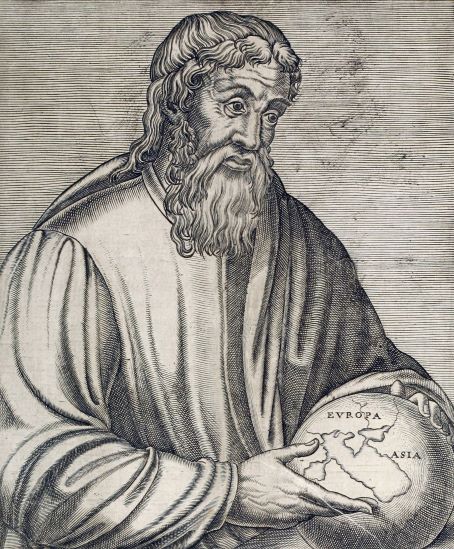Devices of cinema in school geography: Different perceptions of the landscape
DOI:
https://doi.org/10.53455/re.v4i1.163Keywords:
school, image, LandscapeAbstract
Context: The project "Dispositivos do Cinema na Geografia Escolar" (Cinema Devices in School Geography) is a partnership with Colégio Estadual Amazonas (Amazonas State School) and aims to contribute to the initial training of teachers by developing theoretical reflections and actions focused on the analysis and use of cinema devices as creators of geographies. It addresses the geographical concept of Landscape to understand the transformations in the school space, generating stereotypes of places through images. Cinema images can "fabricate" worldviews, which is why a lesson plan was developed by the students, using images as cinema-related devices, based on the ideas of Santos (1988) and Oliveira Jr. (2009). One of the activities focuses on the production of images to understand the idealization of the landscape and capture the actions and impressions of the students, considering their school and social context. Taking into account the influence of social networks on students' worldview, it is possible to generate discussions with geography concepts. Methodology: The methodology of this project includes document analysis, observations, interviews, and questionnaires with students, as well as the planning and implementation of workshops to promote self-regulated learning. Considerations: This research aims to improve the training of geography teachers and educational practice, considering the importance of understanding the transformations in the school space and the influence of cinema images in the construction of worldviews. It also recognizes the role of social networks in students' lives and the possibility of problematizing these influences based on geography concepts.
Downloads
References
FÓRUM NICARÁGUA (MIGLIORIN, C.; GARCIA, L.; PIPANO, I.; RESENDE, D.). A Pedagogia do Dispositivo: Pistas para Criação com Imagens. In: LEITE, C.; OMELCZUK, F.; REZENDE, L. A. (org). Cinema-Educação: políticas e poéticas. Macaé: Editora NUPEM. 2021.
LUFT, H. M., & SCHMITT, D. L. EDUCAÇÃO POPULAR: ESCOLA, SALA DE AULA E PLANEJAMENTO PARTICIPATIVO. Revista Contexto & Educação, 32(101), 2017.p. 29–51. Disponível em: https://doi.org/10.21527/2179-1309.2017.101.29-51. Acesso em Jun./2023 DOI: https://doi.org/10.21527/2179-1309.2017.101.29-51
PIPANO, Isaac ; MIGLIORIN, CEZAR . Camerar um ponto de ver: a pedagogia das imagens em Boa Água. Rebeca , v. 8, p. 143-157, 2019. DOI: https://doi.org/10.22475/rebeca.v8n1.563
RAMOS, A. B.; BARQUETE, F. L.; PIPANO, I. A pedagogia dos dispositivos: um método para a educação audiovisual (Texto online). Semente: educação audiovisual. 2021. Disponível em https://semente.educacaoaudiovisual.com.br/2021/05/06/a-pedagogia-do-dispositivo-um-metodo-para-a-educacao-audiovisual/. Acesso em Maio/2023
SANTOS. Milton. METAMORFOSE DO ESPAÇO HABITADO, fundamentos Teórico e metodológico. Hucitec. São Paulo, 1988.
OLIVEIRA Jr., Wenceslao Machado de. Grafar o espaço, educar os olhos - rumo a geografias menores. Pro-Posições (UNICAMP.) , v. 20, p. 7-19, 2009. Disponível em: https://www.scielo.br/j/pp/a/qJyszWwyZjGLvnnBvHWFWJM/?format=pdf&lang=pt Acesso em Maio/2023. DOI: https://doi.org/10.1590/S0103-73072009000300002
PARAÍSO, Marlucy Alves; MEYER, Dagmar Estermann. Metodologias de pesquisas pós-críticas ou sobre como fazemos nossas investigações. In: MEYER, Dagmar Estermann; PARAÍSO, Marlucy Alves (Orgs.). Metodologias de pesquisas pós-críticas em educação. Belo Horizonte: Mazza Edições,2012. P. 15-22.
Downloads
Published
How to Cite
Issue
Section
License
Copyright (c) 2023 Isabelle Inácio da Silva, Marcela Santa Rosa dos Santos, Penha Caroline da Costa Lopes, Débora Schardosin Ferreira

This work is licensed under a Creative Commons Attribution 4.0 International License.
The magazine follows the Creative Commons (CC BY) standard, which allows the remix, adaptation and creation of works derived from the original, even for commercial purposes. New works must mention the author(s) in the credits.













